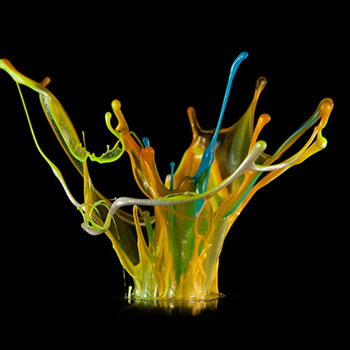How do you determine if a reaction will be "S"_N1 or "S"_N2?
2 Answers
There are many things that determine if a reaction is
Explanation:
1 .Effect of the Nucleophile :- The nucleophile takes part in the slow step (the only step)
of the
promotes the
therefore, reactions with weak nucleophiles often go by the mechanism if the substrate
is secondary or tertiary.
SN2:- Strong nucleophiles are required.
2. Effect of the Substrate :- The structure of the substrate (the alkyl halide) is an important
factor in determining which of these substitution mechanisms might operate.
Most methyl halides and primary halides are poor substrates for
they cannot easily ionize to high-energy methyl and primary carbocations. They
are relatively unhindered, however, so they make good
Tertiary halides are too hindered to undergo
to form tertiary carbocations. Tertiary halides undergo substitution exclusively through
the mechanism. Secondary halides can undergo substitution by either mechanism,
depending on the conditions.
.
3. Effect of the Solvent :- The slow step of the
ions. Solvation of these ions is crucial to stabilizing them and lowering the activation
energy for their formation. Very polar ionizing solvents such as water and alcohols are
needed for the
needed for ionization.
Less charge separation is generated in the transition state of the
solvation may weaken the strength of the nucleophile because of the energy needed to
strip off the solvent molecules. Thus, the SN2 reaction often goes faster in less polar solvents
if the nucleophile will dissolve. Polar aprotic solvents may enhance the strength
of weak nucleophiles.
Good ionizing solvent required.
May go faster in a less polar solvent.
- Kinetics :- The rate of the SN1 reaction is proportional to the concentration of the alkyl
halide but not the concentration of the nucleophile. It follows a first-order rate equation.
The rate of the SN2 reaction is proportional to the concentrations of both the alkyl
Halide [R----X] and the nucleophile It follows a second-order rate equation.
SN1 rate =k_r [R¬X]
SN2 rate =k_r [R¬X][Nuc:- ]
Here are some "rules" that will usually work.
Explanation:
1. Primary substrates undergo
- they form unstable primary carbocations and
- are unhindered to attack by the nucleophile
2. Tertiary substrates undergo
- are too hindered to undergo backside attack by the nucleophile and
- can form stable tertiary carbocations.
3. Secondary substrates can undergo substitution by either
The mechanism will be
- the nucleophile has a negative charge (
"e.g. RO"^"-", "HO"^"-", "NH"_2^"-", "SH"^"-", "CN"^"-", "N"_3^"-", "RCOO"^"-", "X"^"-" ) or - the solvent is a polar aprotic solvent (DMF , DMSO, acetone) or
- the leaving group is the conjugate base of a weak acid (
"p"K"a" < 0 ). Examples are"F"^"-" and"RCOO"^"-" .
-
"S"_"N"1 if -
the nucleophile is uncharged or
- the solvent is a polar protic solvent (
"H"_2"O", "ROH, RCOOH") or - the leaving group is the conjugate base of a strong acid (
"p"K_"a" > 14 ). Examples are"X"^"-", "TsO"^"-", "MsO"^"-", and "TfO"^"-" .
Here's a summary of the above factors
(From SCWiki - Wikidot)


